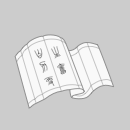
如何指导学生有效使用词典(剑桥英语课堂教学系列)
正版全新
¥ 14.54 6.9折 ¥ 21 全新
库存11件
上海浦东
认证卖家担保交易快速发货售后保障
作者(美)利内著
出版社外语教学与研究出版社
ISBN9787560088600
出版时间2009-08
装帧其他
开本16开
纸张胶版纸
页数150页
定价21元
货号691461
上书时间2024-05-07
- 在售商品 暂无
- 平均发货时间 4天
- 好评率 暂无
- 最新上架
商品详情
- 品相描述:全新
- 商品描述
-
【书 名】 如何指导学生有效使用词典(剑桥英语课堂教学系列)
【书 号】 9787560088600
【出 版 社】 外语教学与研究出版社
【作 者】 (美)利内著
【出版日期】 2009-08-01
【开 本】 16开
【页 码】 150
【定 价】 21.00元
【内容简介】
学习词典中的海量信息经常让学生无所适从,而如何指导学生有效使用词典亦是每个英语教师必须面对的问题。作者Cindy Leaney借助简洁、清晰的语言,为英语教师设计了90多个实用、易操作的课堂活动,从简单的如何查词典到如何通过词典学习英语的搭配、短语、构词法等信息,使枯燥的词典使用教学变得活泼、有趣,在活动中让学生领会不同词典的设计特色,使词典成为学生英语学习中的得力帮手。
【目录】
Thanks and acknowledgementsIntroduction1 Confidence and dictionary skills-building activities1.1 Getting to knowyour dictionary1.2 Finding the words you want quickly1.3 Finding the words you want quickly 21.4 Spellcheck1.5 Alphabet warmer1.6 Alphabet practice: Code breaking1.7 Navigating the dictionary: Where is the letter?1.8 Navigating the dictionary: Where is the word?1.9 Is that a realword?1.10 Navigating the dictionary: Parts of speech1.11 Navigating the dictionary: Labels1.12 Navigating the dictionary: Using guidewords and signposts1.13 Navigating the dictionary: Using guidewords and signposts1.14 Locating multi-word items1.15 Definitions1.16 Example sentences1.17 Dictionary quiz2 Vocabulary-building activities2.1 Learner training: Recording vocabulary2.2 Definitions writing, matching and concentration2.3 Definitions bluff2.4 Collocations i: Make and do2.5 Collocations z:Verb + noun2.6 Collocations 3: Adjective + noun dominoes2.7 Word building 12.8 Word building 22.9 Word building 32.10 Word building 42.11 Word building 52.12 Word building 62.13 Word families2.14 Comparatives patchwork2.15 Adjectives: Positive or negative?2.16 Understanding connotation2.17 Multi-word expressions2.18 Expressions: Opposites?2.19 Phrasal verbs2.20 Common lexical errors: Correction3 Grammar activities3.1 Grammar codes3.2 Countable and uncountable nouns3.3 Uncountable nouns3.4 Recipes3.5 Plurals3.6 Dependent preposition wheels3.7 Dependent prepositions: Error correction3.8 to or-ing?3.9 Common errors: Transitive and intransitive verbs3.10 Grammar auction4 Pronunciation activities4.1 Syllables and stress4.z Stress: Two syllable nouns and verbs4.3 -ed endings4.4 Homophones4.5 Minimal pairs4.6 Odd one out4.7 Rhymes?4.8 Rhyming slang4.9 Bespoke tongue twisters4.10 Short short stories5 Reading and writing activities5.1 Reading: Meaning and context 15.2 Reading: Meaning and context 25.3 Confusables5.4 Formal or informal 15.5 Formal or informal 25.6 Text completion5.7 Academic writing: Discourse markers5.8 Punctuation5.9 Mini-stories5.10 The dice game5.11 Extreme dialogue writing5.12 Fairy story6 Quick activities6.1 Picture this! Memory game6.2 Spelling6.3 Topic brainstorm6.4 Senses brainstorm6.5 Idioms brainstorm6.6 Vocabulary box6.7 Describe and draw6.8 DIY pre-teaching6.9 Associations6.10 Hairy headlines6.11 Categories6.12 Name cards7 CD-ROM and electronic dictionary activities CD-ROM activities7.1 Exploring your dictionary7.2 Idioms7.3 British and American English7.4 Pictures7.5 Lexical chains 17.6 Lexical chains 27.7 Haiku Electronic and online dictionary activities7.8 Concordances and corpora7.9 Word and phrase origins8 Specialized dictionaries Bilingual dictionaries8.1 Word maze8.2 Production dictionaries Picture dictionaries8.3 Memory game8.4 Picture snakes Phrasal verb dictionaries8.5 Phrasalverb + noun shuffle8.6 Pelmanism Idioms dictionaries8.7 Keywords in idioms8.8 Idioms in the mediaResourcesIndex
【文摘】
Navigational devicesAll the major learner dictionaries have navigational devices to help the userfind the right sense of a word. They are called guidewords, signposts, menusor shortcuts.The first chapter in this book has activities to practise using these devicesand to help build dictionary confidence.Example sentencesExample or model sentences are usually taken from written or spokencorpora. They may be modified to make them more accessible. Whereasadvanced dictionaries opt for full sentences, on the whole, the tendency inintermediate dictionaries is to include only sentence fragments in entries forall but the most frequent words. This is simply due to lack of space -intermediate dictionary formats are smaller. However, dictionaries on CD-ROM can hold more text and so may havean examples bank. It depends on how much space is used for sound, video,interactive exercises, etc.Style and usage labelsThese labels tell the user when, where and how words and phrases are used.They may indicate whether a word is marked as formal or informal, whetherit is used in different ways in certain contexts, and whether it is specific to avariety of English (e.g. British, American or Australian).Multi-word items and collocationsVocabulary teaching has recognized how important it is to teach (and learn!)chunks of language, rather than individual words. Chunks include formulaic expressions (Have a nice day!), sayings and catchphrases (better late than never, make my day); many idioms (a red herring, down in the dumps); phrasal verbs (to get on with, to run out of), many discourse markers (by the way, as a matter of fact), and fixed or semi-fixed collocations (wishful thinking, behind bars). The best of the dictionaries present this information clearly and efficiently.
【前言】
外研社从剑桥大学出版社出版的“Cambidge Handbooks for Language Teachers”中选出10本,结成“Learning in Doing·剑桥英语课堂教学系列”,在中国大陆出版发行。 应外研社要我为这套丛书写一个总序的要求,我通读了全部10本书,同时看了原系列其他书的书名。我发现,在所有这些书都涉及外语教学中的重要问题的同时,编者选出目前这10本来先期出版发行,是有道理的。 首先,从这10本书的书名就可看出,它们都是关于当前外语教学中的一些*关紧要的问题。读这套书的教师朋友们会发现,它们是如此切合我们国家当前外语教学(尤其是基础阶段外语教学)所面临的突出问题,用一句俗语说,它们是如此符合我国的“国情”:大班教学、以学生为中心突出个性化教学、课堂设计、口语教学、词汇教学、如何利用多媒体教学手段等等,方方面面,不一而足。
— 没有更多了 —













以下为对购买帮助不大的评价